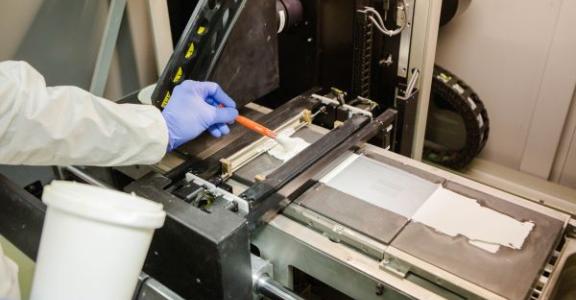Ceramics are usually the best choice for extreme conditions over a long time span and offer several advantages compared to metals. The main applications of technical ceramics are linked to one or more of these advantages. However, the high hardness of ceramics is also responsible for their main drawbacks. This is why additive manufacturing with ceramics can be challenging. Sirris drew up an e-book on the subject, which you can download for free now.
Ceramic materials are usually the best choice for extreme conditions of use in terms of temperature, pressure, corrosive environment, or a combination of all these over a long time span. Compared to metals, ceramics offer several advantages, including high temperature and corrosion resistances, high hardness and thus wear resistance, high strength in compression, lower density than metals and some other specific properties linked to the material itself.
The main applications of technical ceramics are linked to one or more of the advantages mentioned above:
- Products of high value due to their visual and soft-touch aspects, largely used in luxury industry such as watches and jewellery
- Wear parts such as cutting and machining tools, tribology, wire-guides and knives
- Parts for thermal protection such as furnace bricks, space shuttle tiles, or ceramic coating on metal parts
- Chemical resistant products found in chemical and agri-food industries
- Electrical insulators
- Superconductors
- Biocompatible implants and bone substitutes.
Challenges
However, the high hardness of ceramics is also responsible for their main drawbacks: low ductility and high weakness, which limit their use for structural applications. Ceramics are also more difficult to process than other materials.
Although glass dominates the global ceramics market, the most significant growth in the past few years is in advanced ceramics. There are many key issues that need to be addressed to maintain this growth and expand the applications and uses of advanced ceramics.
Additive manufacturing can be an appropriate route to shape ceramic parts. But just like it is for other kinds of materials, it is not realistic to think that AM will solve all the problems faced by the ceramic industry.
20 years of knowledge and experience
Since the beginning of 2000, Sirris has made developments in the domain of AM ceramics, on industrial demands or in the framework of several funded research projects. It has bundled its knowledge and experience in the field and from research in a new e-book. In this book you will find further information on the market, potential & opportunities, the AM processes most suitable for ceramics, industrial success stories and more.
You can download this e-book on AM with ceramics now!

